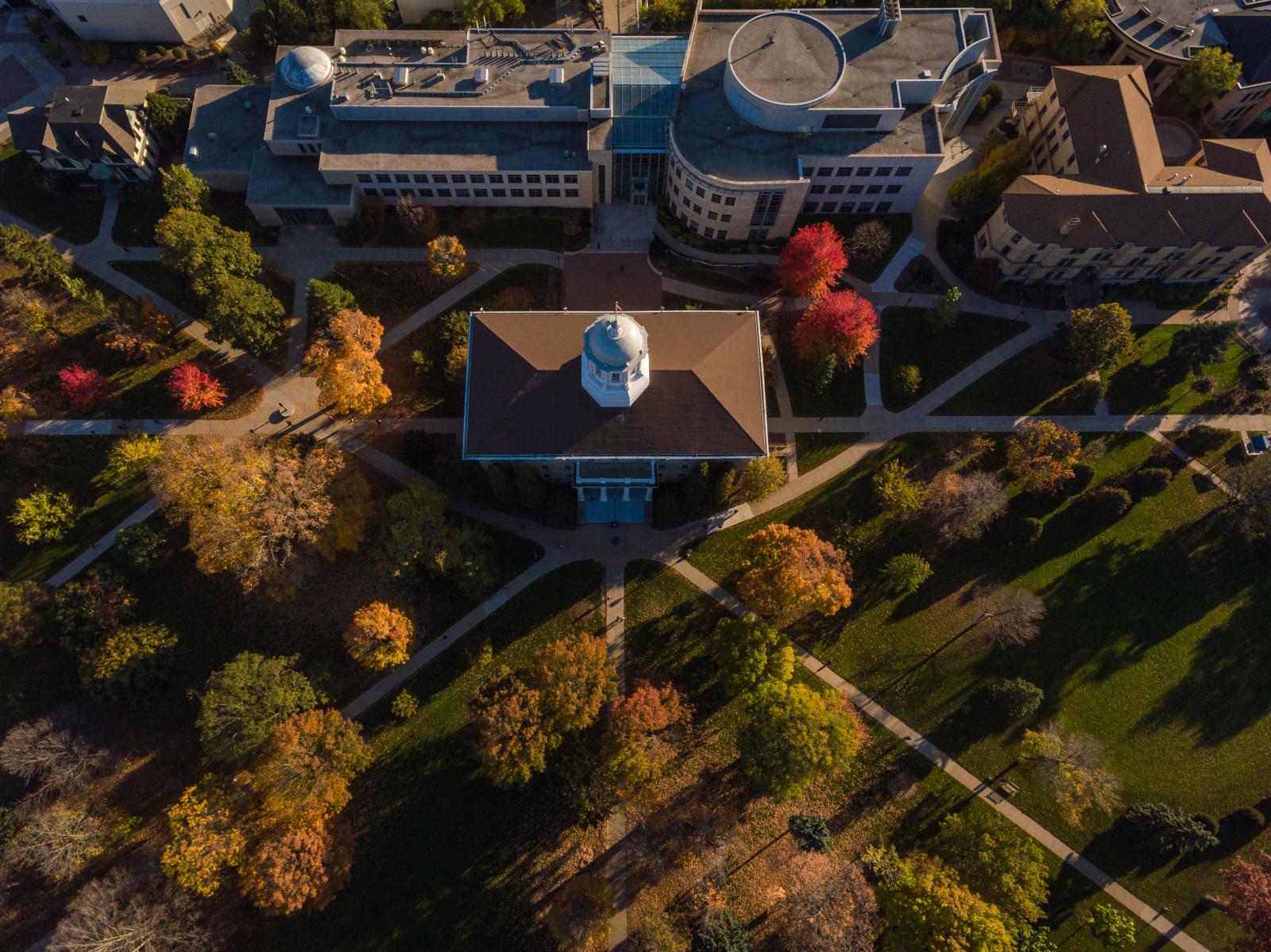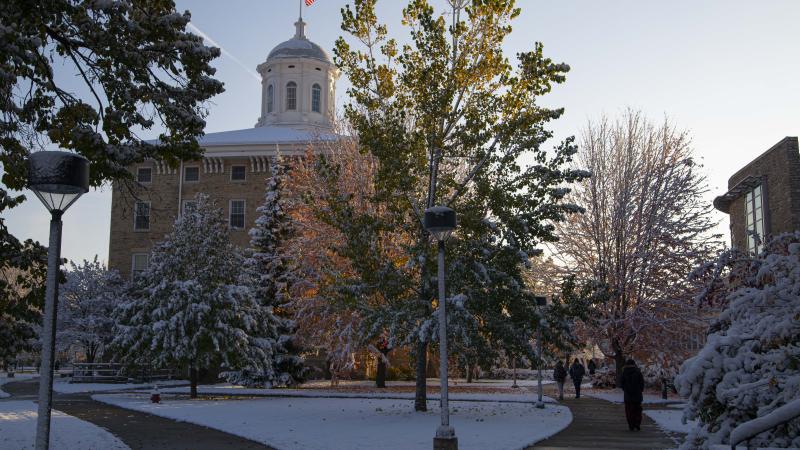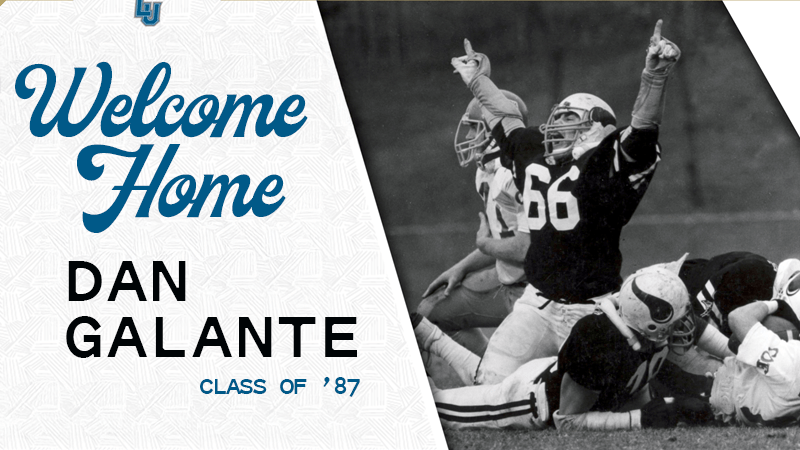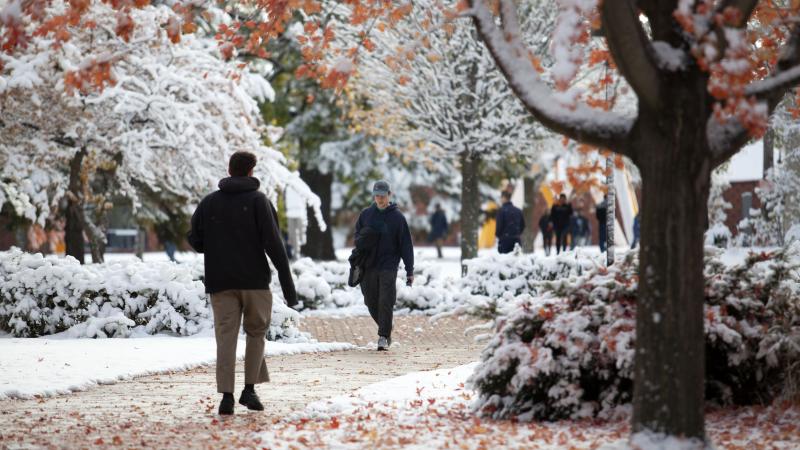Gerry Max ’67 reconnected with Herbert Tjossem shortly before his former Lawrence professor turned 100 years old. It was an interest in the life and work of Richard Halliburton that brought them together at Tjossem’s Appleton home.
---
“The originality and value of a research paper consists not in the material from which it is composed—this is taken from other people’s writings—nor in eccentricities of style or opinion, but in the value of the paper’s thesis as a contribution to knowledge and in the skill and imagination with which the borrowed materials are put together to make this thesis clear and logically inevitable.” Themes and Research Papers (The Macmillan Company, 1962) Ben R. Schneider Jr. and Herbert K. Tjossem
When after decades I reconnected with my former instructor Herbert Tjossem, it was quite by accident. Learning I had written a biography of Richard Halliburton, the retired Lawrence University professor wrote to inform me that in 1936 when the famed travel writer came to his hometown of Marshalltown, Iowa, to deliver a lecture, he interviewed him for his high school newspaper. Intrigued, I accepted his invitation to visit him at his home in Appleton.
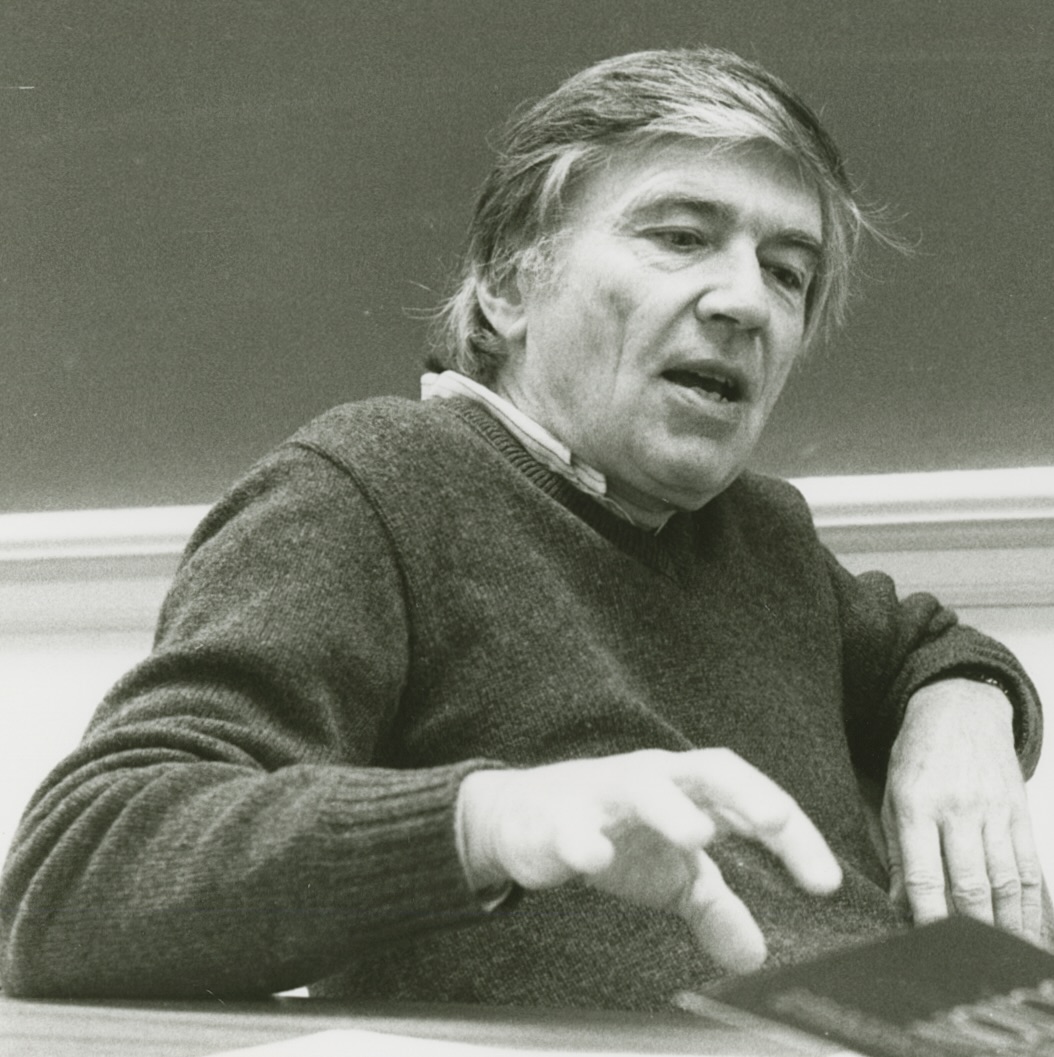
Herbert Tjossem: Lawrence University, 1977
A towering celebrity in his day, Richard Halliburton (1900-1939) was among the most traveled people in the pre-jet age. With such bestsellers as The Royal Road to Romance (1925), The Glorious Adventure (1927), New Worlds to Conquer (1929), The Flying Carpet (1932), and Seven League Boots (1935), he captivated readers with his many daring deeds and lively accounts of foreign peoples and places. His lectures brought to audiences a love of history, literature, and geography as well as a desire to see the world. Wherever he went, he left his mark. In 1934, legendary newsman Walter Cronkite, hearing Halliburton lecture, was encouraged by the writer to pursue a future in journalism. Halliburton’s impact on Herb Tjossem’s career path may have been subtler.
Set in the heart of rural Iowa along the Iowa River, Marshalltown with its population of roughly 10,000 and quiet downtown of three blocks long was to world traveler Halliburton a frontier outpost. American Gothic artist Grant Wood’s quilted landscapes convey the town’s ruralism, Sinclair Lewis’s Gopher Prairie its provincialism. Known for its tornadoes and rich farmlands and as the birthplace of baseball legend Adrian “Cap” Anson, municipal buildings and retail stores lined Main Street. There were a couple banks, a public library, and a Soldiers Home Park and Cemetery. A singular anomaly was the courthouse, of white granite and built in 1885, that featured an onion dome and belfry. A major railway hub, several train lines serving the midsection of America met there.
Halliburton’s fall 1936 Midwest lecture swing started on October 16 at a state teachers association conference in Kirksville, Missouri. During the next six weeks, speaking engagements and book signings were scheduled for him in a new community almost daily. Relevant stops included, on Nov. 8, Cedar Rapids, Iowa, on Nov. 9, Rockford, Illinois with 3,000 attendees, and on Nov. 10, Marshalltown, appearing at the Tallcorn Hotel (now the Tallcorn Towers Apartments). Besides a large conference room, it boasted a gift and tobacco shop, “Garden Room” diner and tea room as well as spacious overnight rooms at reasonable rates.
He was in a good mood. To his delight FDR had just been reelected, plans to build a cliffside home in Laguna Beach, California, were under way, and the writing of his first Book of Marvels—The Occident was going well. Still, he suffered exhaustion, and complaints of hoarseness and chest colds fill his letters. Fit but never robust, the five-foot seven Halliburton, despite his swimming the length of the Panama Canal, scaling the Matterhorn, and twice descending into the Mayan Well of Death, often fell victim to “the grind.” While he could recall little about the man himself, despite his being close enough to him to have him inscribe a copy of The Royal Road to Romance, Tjossem recalled the impact he had on an audience of younger adults largely unacquainted with the wider world. Few people in the community, he said, ever ventured far from home, “except to go on a hunting or fishing trip to Minnesota or Montana.”
Born in March 1923, Tjossem was himself of a Quaker background. His father, Porter Tjossem, a farmer, was Norwegian; his mother, Eva, a homemaker, was English. Herb had a younger brother, Paul, with whom he was close. He could not recall what topics Halliburton chose to speak about. The travel writer had a repertoire of seven or eight standards, however, which he could call up at will. Others, like his swimming of the Hellespont or crossing of the Alps on an elephant, may have been added to the mix. From Marshalltown, Halliburton continued to Boonville, Missouri, site of two early Civil War battles, and on Nov. 11, Armistice Day, lectured to 500 cadets at Kemper Military Academy, which, he noted, the late Will Rogers had attended.
In 1939, brother Paul gave Herb as a birthday gift a copy of The Glorious Adventure, which recounted Halliburton’s tracing Odysseus’ journeys in the Aegean and his following in the footsteps of Alexander the Great. For Herb, the parlors of higher education loomed, and soon he would attend the University of Minnesota (BA), the University of Chicago (MA) and Yale (PhD)—Halliburton was himself a Princeton man. Now Dr. Tjossem, he first taught at Yale, and then at the State College of Iowa before joining the Lawrence College faculty in 1955 where he would remain until his retirement in 1993. Once at Lawrence, he received a Fulbright Fellowship to study at the University of Heidelberg and, under an American Council of Learned Societies Grant, to study at the Linguistic Institute of the University of Washington. While Halliburton’s destiny lay abroad, Tjossem’s lay at home; living in a town along a river like Appleton, so much like the Marshalltown of his boyhood, better suited him.
As a student, I never knew much about the private worlds or backgrounds of the many teachers I had over the years. To me they existed only in the classroom. Sightings off-campus were uncommon. Occasionally I’d see Professor Tjossem at Prange’s Department Store or at Conkey’s Books, or outside Main Hall with custodian Fritz who appreciated someone with whom he could converse easily in German. When I enrolled in Professor Tjossem’s Literary Forms and Types, year 1964, I felt some apprehension as I heard that he was emotionally aloof, a strict grader, and somewhat intimidating. A rebuke from Professor Tjossem, I was told, could throw one into self-analysis for days. He knew the classroom was “an artificial situation” but students in his classroom believed themselves put in a basic training camp. As a drill instructor, he stressed that he was our teacher, we his students, charges “not especially qualified to inform or enlighten their teacher.” He did not coddle students, he challenged them. You spoke when called upon to do so; you just didn’t blurt things out.
The mid-morning class met twice weekly in Main Hall. Class size was small, composed mostly of sophomore women who were English majors. On the dot Professor Tjossem strode with seriousness of purpose into class. Behind the lectern, as he opened his text, a slight smile formed on his poetic face, one with fixed dark eyes and a proud sort of Iroquoian nose. He was lean, of medium height, casual in manner and well-groomed. Often he wore sweaters which made him look preppy or like an older collegian. More often he wore a light-colored blazer over a lighter colored shirt, resembling to me an industrial arts instructor and not so much an English professor whom I pictured as rigidly encased in a dark formal suit and tie.
He addressed the males in his class as “Mister” so-and-so, the females as “Miss” so-and-so. We read short stories by Henry James, E. M. Forster (The Road to Colonus), James Joyce (The Dead), Katherine Mansfield (Miss Brill), and, whom he thought a “careful craftsman,” D. H. Lawrence (Odour of Chrysanthemums”; poems included ones by Donne, Wordsworth and Yeats. He devoted some time to James’ The Beast in the Jungle whose protagonist John Marcher secretly expectant of some great thing in life never commits himself to the here and now and to May Bartram, whose declaration of love to her he ever postpones. Inspired by the example of Jake Barnes in Hemingway’s The Sun Also Rises, I asked him if Marcher was “impotent.” Professor Tjossem said something to the effect that the text did not support the claim. Lesson: “Read from” and not “into’ a text. Still, I was young. What did I know, as would John Marcher, about regrets come too late?
We read exclusively great literature, though, in an aside, Professor Tjossem offered that we might examine terribly poor literature to note the difference. He said he knew less about American than English literature. It was common to think that in examining great works of art one murdered to dissect, but in Tjossem’s class, one gave birth to the distinct meaning of a work. One was taught to explicate the text—not to free-associate or intrude personal notes into that text: Avoid “gratuitous amateur philosophizing” and “free-associating.” Understand before you interpret. We regularly wrote a two-page theme explicating an assigned work. The longer term-paper was to be eight pages. In those days one used a non-electric typewriter. Mine was an old Olivetti with sticky keys and a faded ribbon. Neurotic in my desire to get off on the right footing, the topic sentence had to be clearly thought out before I trekked further. The best way to correct a miscue was to use Eaton Corrasable stationery, a miracle invention to the error prone, or liquid paper, a bit messy if not carefully applied. In the days before the word processor scissors-and-paste editing was the norm. Subject to deadlines, papers were forced expressions, manufactured rather than garnered. Books and journals were main research tools. Smartphones, computer editing programs and easy-access online data resources were the stuff of dreams.
My early critical papers were mediocre—C, C plus, but help was on its way. In 1962 Professor Tjossem with fellow Lawrence English Professor Ben R, Schneider, Jr. (1920-2013) published Themes and Research Papers, a brief manual in the Strunk and White Elements of Style tradition on how to write effective “expository papers.” Directives were incisive: “When you write the first draft, strive for unity, coherence and substance”; “In writing the final draft, try to improve the quality of each sentence”; “Write your paper from a complete sentence outline.” At the time ordering my thoughts into such regimented columns of words as the manual required was a daunting task. Do you start with a topic sentence and go from there? Little space was devoted to the idea of ‘free-writing,’ or to the creating of a mass of words and sculpting the result into an identifiable form. Two sample and reasonably interesting research papers, deemed models of excellence, filled much of the 74-page manual.
Poor at following instructions and inept at executing their demands even when I did follow them, I was nevertheless willing to be taught. In time failure bred some success. Our last assignment required that we explicate, to discover its intended meaning, a published poem or story about which no reviews or explanatory notes presently existed. I chose the poem “Pegasus” by C. Day-Lewis. Buckling down, I wrote a paper that was dispassionate and drily to the point. Diffident, I half-expected a ‘not so good grade.’ When the paper was returned to me, I looked for the usual red mark-ups. On the last page it said, “a nicely developed paper,” and added “one more proof-reading would have helped the paper.” Going through it, I spotted two typos and one misspelling. The paper earned an “A minus.” For the course I earned a B.
After graduating, I seldom saw Professor Tjossem except once in 1982 at a Class Reunion and once at Conkey’s. Years passed. In 1993, I spotted him in the periodical section of the Seeley Mudd Library. The character of John Marcher would have hesitated, but, grown to some stage of wisdom, I needed to tell Professor Tjossem how much he meant to me as a teacher. I then went up to him, identified myself and said simply, “Herb, you were one of the best teachers I ever had. Thanks to you I have become a better reader and writer.” He smiled, amused.
Built in 1918, the red brick house on Hancock Street had been his residence for over sixty years. Its longevity like his own comforted him. In class he once said, off the cuff, “In life there are symbols as in literature.” During my recent visit, we sat in the kitchen, adjourned then to the parlor where I inspected several of his books, including an 11th Edition of the Encyclopedia Britannica. Next he led me to the patio overseeing a densely shrubbed and wooded backyard.
Congenial, keen-witted, Professor Tjossem seemed the younger man he had been rather than the older man he had become. “Next March, I’ll be one hundred,” he said, a touch of triumph in his voice. He looked then at the several stacks of magazines piled up on a table. “Should I renew my subscriptions to these magazines?” he asked. “I haven’t read a one of them.” “Yes,” I said: “Any renewal is important.” He smiled, relieved. “I’ve been lucky,” he said moments later.
Richard Halliburton was not so lucky. Not long after his visit to Marshalltown, he set in motion the series of events that led to his sailing a Chinese junk, the Sea Dragon, from Hong Kong to the Golden Gate International Exposition in San Francisco. Outcome did not meet expectation. On March 24, 1939, about eleven hundred miles west of Midway Island, his ship headed into a storm; he and his crew of fourteen were never seen again.
With his message that young adults first see the world before deciding upon a major life course, Halliburton remains a key figure in the history of travel abroad programs. A spate of biographies and studies about the man have been produced. Long out-of-print, his books have all been reissued. Updated and expanded, Schneider’s and Tjossem’s Themes and Research Papers might receive a similar return. The foregoing theme, it might recommend, could be shortened, then again, maybe lengthened to capture more fully the vast scope of lives whose contributions to the humanities were vital and true.
*Although The Lawrentian for October 14 and October 21, 1927, notes his stopping in Green Bay, Halliburton does not appear to have visited Appleton, or Lawrence College.
Halliburton’s papers are kept at Rhodes College in Memphis and at Princeton University.
